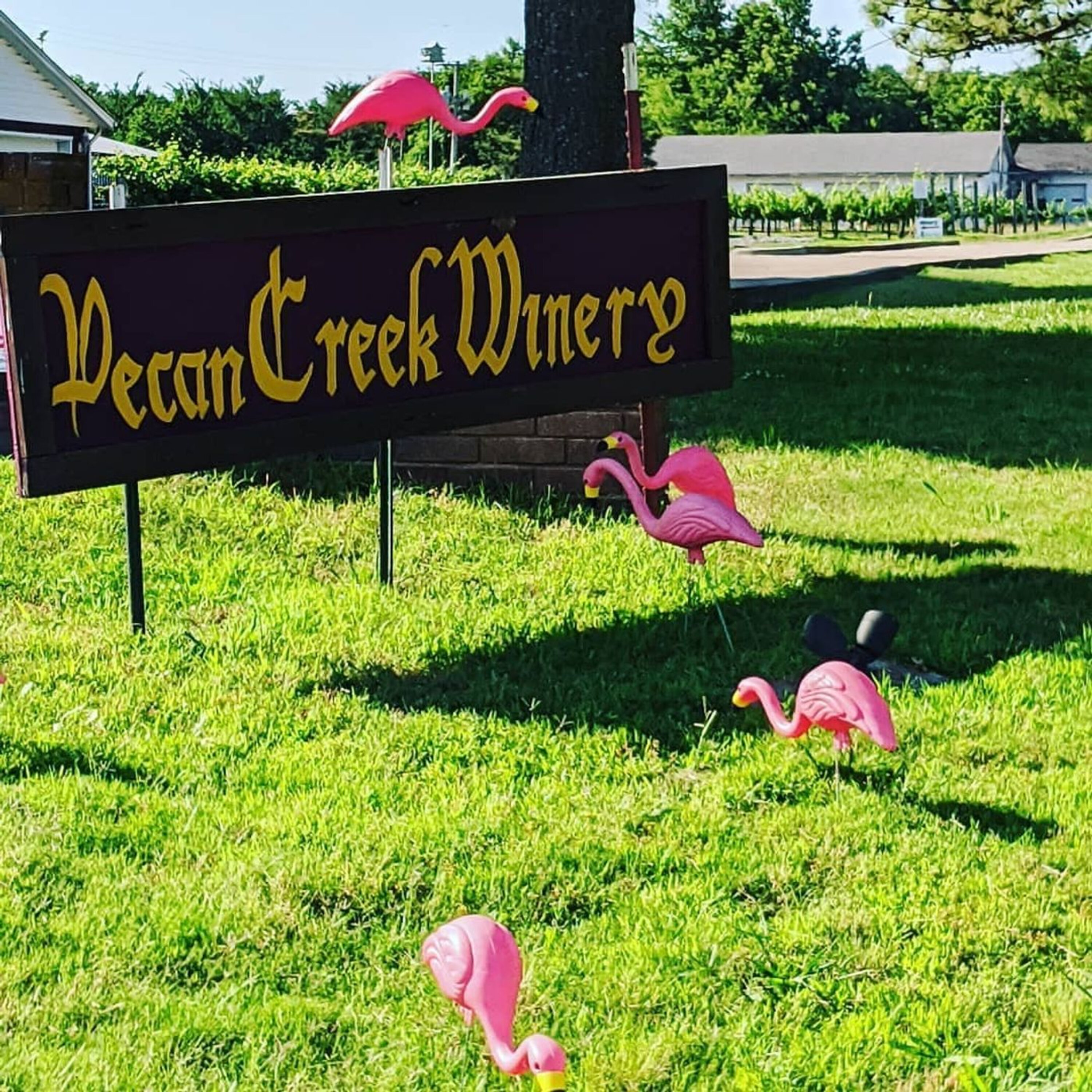Pecan Creek Winery - Muskogee, OK Pt. 3


Welcome to The Best 5 Minute Wine Podcast. I'm your host Forrest Kelly from the seed to the glass. Wine has a past. Our aim at The Best 5 Minute Wine Podcast is to look for adventure at wineries around the globe. After all, grape minds think alike. Let's start the adventure. We wrap up our conversation with Bob Wickizer of Pecan Creek Winery, Muskogee, Oklahoma.
OK, Bob, let's get down to the nitty-gritty. How many labels do you have?
We actually have 20 labels. There are dry and sweet labels. And there are there's only two that are not from grapes or products that we get locally. We started. Everybody in the world wants cabernet sauvignon. Cab is hard to get, and frankly, it's hard to grow here. We do grow some, and we have a limited production right now. We did win bronze at San Francisco Chronicle for a couple of years ago. So I start getting nice source grapes from Lodi originally and now from Washington State. We make one line called Purple Martin. That's grapes that are not local, but it's a pretty darn good wine. And we also buy some mead from a Missouri mediary, and we add about five percent of one of our white wines to it to give it a little more acid and balance it up. And those are the only two at either end of the spectrum that we don't source and make entirely locally. So hypothetically, Bob, if a vineyard from California ever said you couldn't compete with what we produce here in California, what would you say?
I still do say that any idiot can make good wine from West Coast fruit. But if you want a real challenge, you want to come out here, try it. The UC Davis field book for all the pests and bugs and viruses and bacteria and molds that affect wine is about 30 pages long. And the Oklahoma State University field book is about 200 pages. We have more things to worry about here than a grape grower in California would ever even dream about in their worst nightmares. And then we have the weather. Of course, you know, it was our meteorological data of last freezes, supposedly April 15th tax date. But April twenty-sixth this year, we had twenty-five degrees for four hours. And our Vitis vinifera plants especially, we're pushing out shoots about two, three, four inches long and they just turned brown and fell off. It was like, oh my gosh. But, you know, you never worry about a freeze, especially. And after your butt out started pushing out chutes, that's unheard of in most grape-growing regions. So, you know, we have that, and we have ridiculously humid hot summers. So the difference between the day and nighttime temperature, it can be 30 or 40 degrees in California, nighttime. Sometimes it doesn't cool off below 80 degrees. It's hard for the vines to rest metabolically. That's one of the reasons why our sugar levels are not as high as they get in California, but our acid levels tend to be very good. I personally do not like high alcohol wines, anyway. I prefer 12 to 13, maybe 13, four percent above. Thankfully, we can't grow alcohol here, so we take what we can get. We're having fun, and we're kind of the contrarian's. My partner, Dr. Wilkinson, and our vineyard manager Gary Ketchum is just fabulous at managing the vineyard.
And finally, Bob, because you take such great pride in your winery, you encourage people to test their local wineries, don't you?
You know, if you believe in it and local business, then, you know, don't buy exclusive cheapo wine at the big, big-box and grocery stores come out to your local winery and enjoy something truly local. Ours is grown here. It's made here. It's as local as it gets. It cost a little more.
But on the other hand, we tend not to use any chemicals or additives. I can tell you that our grapes and the soil around our vines have never seen a drop of Roundup. Ever understand that most California wines, even the organic ones test with residues in them. And we don't use Mega Purple and the stuff that the big wineries use, and we tend just to take our time. And so our whites may take six months to come out, and our reds never see the light of a bottle for a year to four years. Let time do what time does best that we're not in a hurry to push stuff out the door for cash flow reasons. We're trying to make darn good wine that's respectable, and that reflects the characteristics of our region. The website is Pecan Creek Winery.com. Facebook, you look up Pecan Creek Winery. And you'll find us, and we're shipping through VINOSHIPPER, we shipped to 40 states and California will be on board soon as number forty-one.
Thank you for listening. I'm Forrest Kelly. This episode of the Best 5 Minute Wine podcast was produced by IHSYM. If you like the show, tell your friends and pets and subscribe. Until next time, pour the wine and ponder your next adventure.
This podcast uses the following third-party services for analysis:
Chartable - https://chartable.com/privacy
Podcorn - https://podcorn.com/privacy
Support The Best 5 Minute Wine Podcast: https://www.patreon.com/thebestwinepodcast
See omnystudio.com/listener for privacy information.
